Safety, efficiency, and cost-effectiveness are crucial in the world of natural gas distribution, and hence, it is essential to choose suitable materials. A significant choice that has emerged for gas pipelines is HDPE, known for its strength and resistance against various environmental factors. The economic benefits, ease of installation, and long-term performance of HDPE gas pipes will be discussed in this article. By understanding the most vital features of HDPE, people can know why many gas utility firms and builders now use this product. Let’s get into details about what makes up HDPE gas pipes and how they will shape the future of natural gas distribution.
What is an HDPE Gas Pipe?
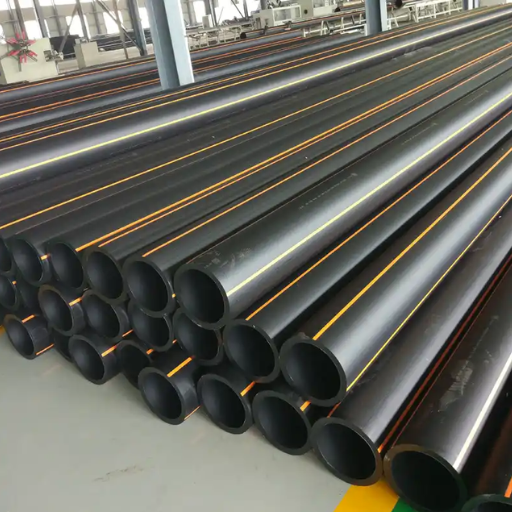
Image source: https://www.hailigd.com/
High-Density Polyethylene (HDPE) gas pipe is a type of plastic pipe designed specifically for transporting natural gas or safely moving gases under high pressure. These pipes have been manufactured from tough, low-density polyethylene, thus ensuring they are resistant to corrosion, chemicals, and environmental stress, which makes them suitable for underground installations. They are lightweight and flexible enough to be easily handled during installation, reducing labor expenses incurred during on-site work. Furthermore, these products have been made out of a long-lasting material withstanding large amounts of pressure, hence ensuring improved performance in their delivery systems.
Critical Characteristics of HDPE Pipes
HDPE tubes have some essential qualities that make them especially good for gas distribution.
- Durability: HDPE’s ability to resist corrosion and chemical degradation enhances its durability, ensuring a long life-span that reduces replacement and maintenance costs.
- Flexibility: HDPE pipes’ natural flexibility enables them to bend without breaking hence making it easier to install in difficult terrains and minimizing the need for joints.
- Lightweight: HDPE pipes are much lighter than conventional materials like steel or ductile iron, reducing the cost of transportation and handling during the installation process.
- Joint-free connections: Heat can be used to melt HDPE pipes together, creating joint-free connections that minimize the chances of leakages occurring within the system.
- Pressure Resistance: HDPE pipes have been designed to handle high pressure by ensuring gas is safely transported in line with strict safety requirements.
All these qualities add up to make HDPE an excellent choice when considering how reliable and effective it is for natural gas distribution networks.
Advantages of Using HDPE for Gas Distribution
Using HDPE products in gas distribution systems has many benefits that enhance operational efficiency and safety. Firstly, they resist corrosion, which means their lifespan is prolonged, reducing maintenance costs. This strength results in minimal service interruptions and lower total life cycle costs. Secondly, lightweight characteristics simplify transportation, reducing labor costs due to fewer workforce requirements at the site or installation location. Moreover, fusion welding creates seamless joints that do not leak, thus enhancing the integrity and safety of the formed networks. Finally, easy installation in challenging environments reduces the demand for extensive excavation through increased flexibility in constructing straightforward gas pipeline projects.
Comparison with Other Pipe Materials
Comparing HDPE Pipes with other materials used for gas distribution like PVC, steel and cast iron, there are several differences that can be observed. Polyvinyl Chloride (PVC) pipes on the other hand may be resistant to corrosion but they have lower tolerance for temperature changes and could become brittle over time, thereby presenting a liability for high pressure gas operations. On the other hand, steel pipes offer great strength and resist pressure effectively, although they rust easily and thus need corrosion protection, which implies additional maintenance costs. Furthermore, steel is heavy, making it more expensive to transport and install. Conversely, cast iron pipes have a long life span and durability. Still, they are prone to rust, requiring deep excavation during the installation and repair, leading to increased labor costs. Overall, HDPE’s combination of lightness, flexibility, resistance to corrosion, and fusing welded leak prevention places it ahead of these traditional materials in modern natural gas supply.
How is Polyethylene Gas Pipe Installed?
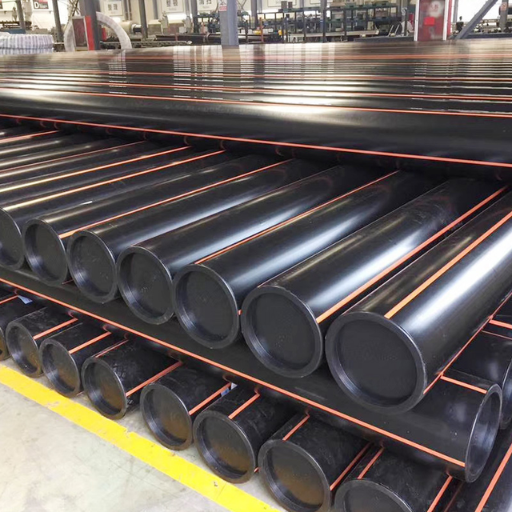
Safeness and efficiency are guaranteed by following several necessary procedures when a polyethylene (PE) Gas Pipe is being put into place. Initially, a trench should be dug appropriately according to local regulations or codes. The PE pipe is then unrolled into the trench; it must be laid out without unnecessary twists to maintain its integrity. The fusion welding joins the pipes, leaving strong connections that do not leak. When connections are made, backfilling using soil obtained from excavation should be done while ensuring that no sharp objects remain inside which may puncture the pipe. Finally, leakage tests will confirm whether there were any leaks during installation before such systems can operate safely today.
Different Types of Fusion Techniques
Several major approaches characterize the fusion welding of polyethylene gas pipes, each with distinct benefits. The main types are as follows:
- Socket Fusion: It involves heating the ends of two pipes until they are in a molten state and then pressing them together to make a strong bond. This is usually used for small diameter pipes and it is highly appreciated due to its simplicity and effectiveness.
- Butt Fusion: In this technique, two pipe ends are placed on a heated plate until they melt and then the plate is removed while the pipe ends are pressed into one another. Butt fusion is mainly applied in large-diameter pipes for seamless connections that improve the overall integrity of gas distribution systems.
- Electrofusion: This method uses specialty fittings that contain electrical coils. Once an electric current flows through these coils, they heat up, melting both fitting and pipe surfaces and creating a solid bond between them. Electrofusion is particularly effective when joining pipes where conventional methods might not be possible or for variable reasons, ensuring workability and quality.
These techniques are essential in ensuring safe installations and proper maintenance of polyethylene gas pipelines.
Guidelines for Installation
Safety and productivity while installing polyethylene gas pipes depend on observing best practices. Below are some essential rules distilled:
- Pre-Installation Planning: Before installation, site analysis is performed, necessary permits are obtained, and an installation plan that adheres to local regulations is developed.
- Proper Material Selection: For the particular application and pressure requirements, use quality polyethylene materials meeting industry standards. Ensure that all pipes, fittings, and fusion equipment are correct.
- Environmental Consideration: Installation must consider ecological factors such as soil type, moisture levels, or preexisting underground utilities that may interfere with the process. Where required, erosion control measures must be implemented.
- Fusion Equipment Calibration: All fusion equipment should be calibrated and maintained according to the manufacturer’s specifications. Periodically verify equipment accuracy to minimize errors during the fusion process.
- Quality Assurance: Thorough inspections of all joints and connections after installation are essential. Before commissioning the system, pressure testing to validate integrity ensures that there are no leaks.
By following these guidelines one can guarantee that installations of PE gas pipeline systems will be done safely, efficiently and in accordance with regulations.
Common Issues During Installation
When installing polyethylene gas pipes, several common issues may arise, which can affect the overall safety and efficiency of the installation:
- Wrong Joint Fusion: Weak connections resulting in leaks are often caused by the wrong fusion of pipe joints. It is essential to do a proper fusion process and ensure equipment calibration.
- Pipe Misalignment: Pipes that are displayed out of alignment can cause strain and eventually lead to their failure. It is essential to maintain proper alignment during installation to prevent future complications.
- Ground Movement: Changes in the environment, like ground shifts due to weather conditions or activities resulting from construction, can influence the stability of pipes. Continuous evaluation and mitigation measures are needed for underground installations.
With knowledge about these problems, installation teams will proactively identify potential challenges and maintain the integrity of a gas distribution system.
Why Choose HDPE for Natural Gas Applications?
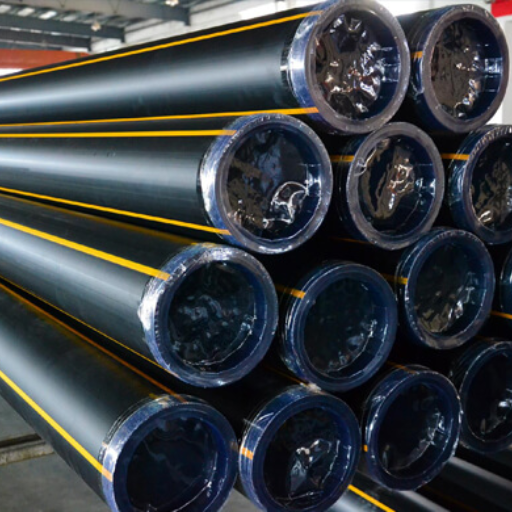
High-density polyethylene (HDPE) is an excellent choice for natural gas applications due to its exceptional durability and corrosion resistance, which appreciably improves piping life span. The suppleness of HDPE enables it to withstand ground movements and external stresses, reducing the chances of further damage. In addition, HDPE joints can be fused, forming an integrated flawless bond, making it safe, effective, and leak-free. Besides being lightweight, which facilitates easy fixing and makes them expensive, they also adhere to different regulatory standards. These attributes make HDPE a preferred material for reliable and efficient natural gas distribution systems.
Durability and Corrosion Resistance
For example, High-Density Polyethylene (HDPE) has excellent toughness and is highly resistant to corrosion, making it suitable for use in natural gas. HDPE is not prone to soil chemicals and moisture-induced rust and corrosion and is familiar with traditional materials such as steel or iron. This way, it remains whole even after several years of usage, regardless of the harsh surrounding environment. Moreover, it can bend without breaking when there are earth movements. Significantly enough, the material endures elevated stress levels and heavy loads, essential for a reliable gas supply system. Hence, HDPE guarantees safety and low maintenance costs throughout the life cycle of the infrastructure.
Leak-Free Features
Among other things that make high-density polyethylene (HDPE) special is its ability to achieve joint freeness from leakage through thermal fusion. In this case, the two edges of HDPE pipes undergo melting by heating them until they become molten before they can be joined together tightly, creating unbreakable joints between them. Thus, such connections eliminate all additional components, such as fittings, that would lead to leakages within ordinary piping systems. It also helps prevent leaks under pressure since HDPE naturally resists stress and strain. With no seams and better jointing capabilities, HDPE significantly enhances the reliability of natural gas distribution systems, thus ensuring safe operations efficiently.
Cost-Effectiveness and Longevity
Not only does high-density polyethylene (HDPE) perform well, but it is also very cost-effective in terms of its lifespan. Although the initial installation costs of HDPE may be similar to those of conventional pipe materials, its longevity and low maintenance save money in the long run. Research shows that HDPE can last as long as 50 years or even more with slight deterioration, thus outperforming others like steel and cast iron, prone to frequent rusting and breaking since they will need regular replacements and repairs. Moreover, HDPE is easily installed, thus reducing labor costs and project duration for natural gas infrastructures. These factors combine over time, resulting in substantial savings that make investing in HDPE a good decision for safety and financial effectiveness.
How Does HDPE Pipe Aid in Natural Gas Distribution?
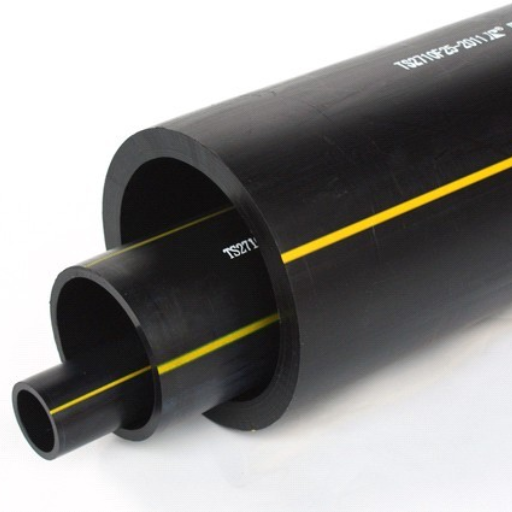
Lightweight, flexible, corrosion-resistant pipes made from high-density polyethylene (HDPE) enhance natural gas distribution by adapting well to various environmental conditions. The seamless joining process ensures structural integrity, improving worker safety by preventing potential leakages. Due to this attribute, stress or strain on it does not cause any damage, making it suitable for use where gaseous substances are transported at different pressures between one side of the system and another. Its lengthy lifespan plus minimal repair requirements prevent such gas disruptions, making High-Density Polyethylene an efficient means of distributing natural gas throughout a city or community.
Role of HDPE in Gas Distribution Systems
With its very nature, HDPE has proved to be a significant polymer in gas distribution systems because it enhances safety and efficiency. Firstly, unlike other rigid materials, HDPE is flexible enough to accommodate ground movements and environmental changes without breaking. Secondly, since it is chemically resistant, it can quickly transport diverse types of gases without corroding, hence minimizing leakage chances. In addition to that, HDPE pipes are fusion-welded; thus, the joints formed are continuous and long-lasting, which reduces the risks associated with leakages. All these attributes make HDPE an essential material for modern gas distribution utilities that seek to enhance construction efficiency while ensuring a reliable gas transmission network.
Benefits Of Traditional Gas Pipes
High-Density Polyethylene (HDPE) pipe is advantageous compared to traditional steel or cast-iron models used for natural gas lines and service piping. The main advantage comes from their lightweight characteristic that eases transportation and installation, thereby reducing the labor costs of handling the pipes. Unlike conventional materials, HDPE does not rust or react chemically, increasing its longevity and reducing frequent replacements. Henceforth, there are fewer chances for leaks resulting from the seamless joining process of HDPE pipes throughout the entire system, improving overall safety within supply points. Moreover, being able to absorb seismic activity through earth movement flexibility better makes high-density polyethylene more valuable than others. In conclusion, the competitiveness of high-density polyethylene over traditional gas pipe systems results from its economic efficiency, safety, and durability considerations.
Case Studies and Real-World Applications
HDPE gas pipes, which are high-density polyethylene (HDPE), have been effectively utilized across some sectors to demonstrate their advantages in reality. In real-life applications, for instance, HDPE was used by the City of Los Angeles in its gas distribution systems to enhance infrastructure resilience as well as extend their lifespan. In connection with this project, there was a significant decrease in costs associated with installation that made safety higher due to the materials’ leak tightness properties. Similarly, companies within the oil and gas industry have adopted HDPE pipes for underground lines, reducing maintenance expenses and minimizing corrosion risks. Additionally, Florida State has designed its storm-water management systems using HDPE to remain operational despite harsh environmental conditions and deliver efficient drainage. These examples indicate how flexible and dependable HDPE is when dealing with the latest challenges in engineering.
What are the Standards and Specifications for HDPE Gas Pipes?
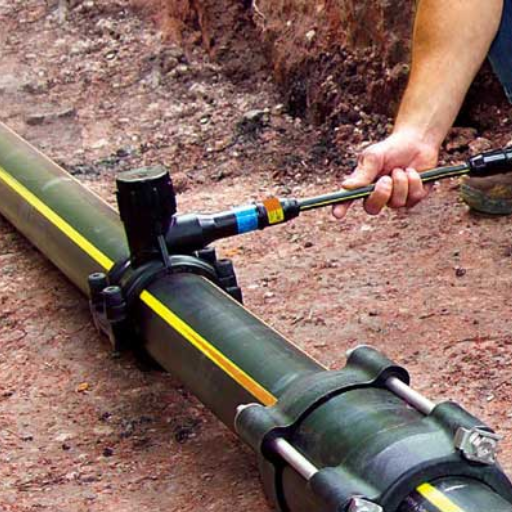
Various standards and specifications regarding high-density polyethylene (HDPE) pipes connecting natural gas supplies should be complied with. In America, the American National Standards Institute (ANSI) and the American Society for Testing Materials (ASTM) are major regulatory bodies that control the HDPE gas line market. For example ASTM D3350 gives details about what materials like density or melt flow index should be used on while ANSI/CSA B137.4 describes how these pipes should be designed and installed in case they are meant for distribution of natural gas . Another source of regulation is based on Title 49 CFR Part 192 from the U.S Department Of Transportation’s Pipeline And Hazardous Materials Safety Administration (PHMSA). This title defines safety requirements for underground pipelines that carry natural gases [and serve as] the basis for regulations governing the transportation of natural gases; under such regulations is where compliance would guarantee reliability/durability/safety in applications involving HDPE pipe connections carrying flammable gases.
Key Standards: ISO, NZS, and BS EN
The quality and safety of HDPE gas pipes depend on several international standards. Under ISO 4427, the International Organization for Standardization (ISO) provides guidelines that encompass specifications for polyethylene pipes used in water supply, also indirectly including those utilized in gas applications due to similar mechanical properties. The New Zealand Standard (NZS) 5840 outlines polyethylene piping systems’ requirements to ensure they can withstand local operational demands. Similarly, the British Standards European Norm (BS EN 1555) sets forth specifications for polyethylene pipes for gas distribution. These include mechanical properties, performance under pressure, and installation best practices. Adherence to these standards is crucial to ensuring reliable and secure HDPE gas piping systems worldwide.
Understanding SDR11 and PE2708 Pipes
SDR11 (Standard Dimension Ratio 11) is a specific ratio used to describe the dimensions of high-density polyethylene (HDPE) pipes; it shows how much pressure a pipe can handle by considering its diameter divided by the minimum wall thickness. Because they are made with strength and flexibility balanced out, SDR11 pipes are commonly used in various applications, like natural gas flows.
Polyethylene of the PE2708 type has been developed particularly for gas pipeline applications. This category means that the material meets strict performance criteria relevant to areas such as impact resistance, environmental stress cracking resistance, and temperature fluctuations. Gas distribution systems heavily rely on PE2708 tubes to guarantee reliable supplies and safe management and transportation of natural gas.
Ensuring Compliance and Quality
Ensuring compliance and quality of polyethylene piping systems involves strict adherence to established standards and regular performance evaluation. Some key industry websites emphasize the importance of certifications like those outlined by the American Society for Testing and Materials (ASTM) and the Plastics Pipe Institute (PPI). For them, it is advised that manufacturers perform frequent tests or inspections to validate the mechanical properties and safety features of PE2708 and SDR11 pipes. Furthermore, best practices highlighted include keeping records of material certification and installation practices to comply with local regulations and ensure long-term performance. Continuous training given to installers and following the manufacturer’s directions are also vital to preserving the gas distribution system’s integrity and reliability.
Reference sources
-
JM Eagle™ Specifications for HDPE Black Gas Pipe
This specification document details the requirements and standards for HDPE pipes used in fuel gas distribution, indicating the material’s suitability and reliability for such applications.
Read more -
Exploring HDPE Pipe Joining Methods
This article covers various methods of joining HDPE pipes and discusses the long-term cost savings associated with using HDPE over traditional materials.
Read more -
Exploring the Benefits and Applications of HDPE Gas Pipe in Modern Infrastructure Systems
This piece highlights the environmental benefits, cost-effectiveness, and operational advantages of using HDPE gas pipes in modern infrastructure.
Read more
Related Articles:Essential Characteristics of High-Density HDPE Gas Pipe





